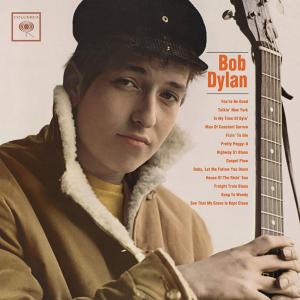
Bob Dylan (1962)

1. You're No Good
2. Talkin' New York
3. In My Time of Dyin'
4. Man of Constant Sorrow
5. Fixin' To Die
6. Pretty Peggy-O
7. Highway 51
8. Gospel Plow
9. Baby Let Me Follow You Down
10.House of the Risin' Sun
11.Freight Train Blues
12.Song to Woody
13.See That My Grave is Kept Clean
History rarely pauses to take note of a debut as unassuming as Bob Dylan’s first LP. Released in 1962 with modest fanfare, Bob Dylan arrived at a moment when folk revivalism was a niche pursuit and its latest champion, a ragged, nasal-voiced youth from Minnesota, barely registered outside the Greenwich Village circuit. Yet in hindsight, this album stands as a pivotal moment—not only in Dylan’s career, but in the broader arc of 20th-century American music.
Out of thirteen tracks, only two were originals. The remainder—a collection of traditional folk and blues covers—reflects a young artist still testing the limits of his craft. But the surprise lies not in the predominance of standards, but in the inclusion of any original material at all. For an unknown twenty-year-old on a major label, the presence of self-penned songs was highly unusual, and in Dylan’s case, revelatory. Talkin’ New York is an early declaration of persona—wry, sardonic, and observational, a talking blues that sketches the young troubadour’s alienation with brisk wit. Song to Woody, meanwhile, is an earnest homage to the album’s guiding spirit, Woody Guthrie, delivered in tones of both reverence and emerging self-assurance.
Guthrie’s presence hovers palpably over the album. Dylan's phrasing, intonation, and ideological compass are all clearly indebted to his hero. And yet, for all its homage, the record manages to transcend mere mimicry. There is a surprising intensity coursing through the performances—a fierce, youthful urgency that injects vitality into even the most timeworn standards. Tracks like Man of Constant Sorrow and Fixin’ to Die bristle with energy and, if not protest, then at least a restless defiance that foreshadows the revolutionary voice Dylan would soon unleash upon the cultural mainstream.
The album’s rawness, its unpolished delivery, and its unapologetic simplicity contribute to its enduring appeal. At the time, it may have been dismissed as just another folk collection, but in retrospect, Bob Dylan stands as a document of a young man discovering not just the songs of a previous generation, but how to make them entirely his own. That this very same man would, within a year, redefine modern songwriting, seems less a surprise than an inevitability hinted at in every creak and chord.
Go back to the main page
Go To Next Review